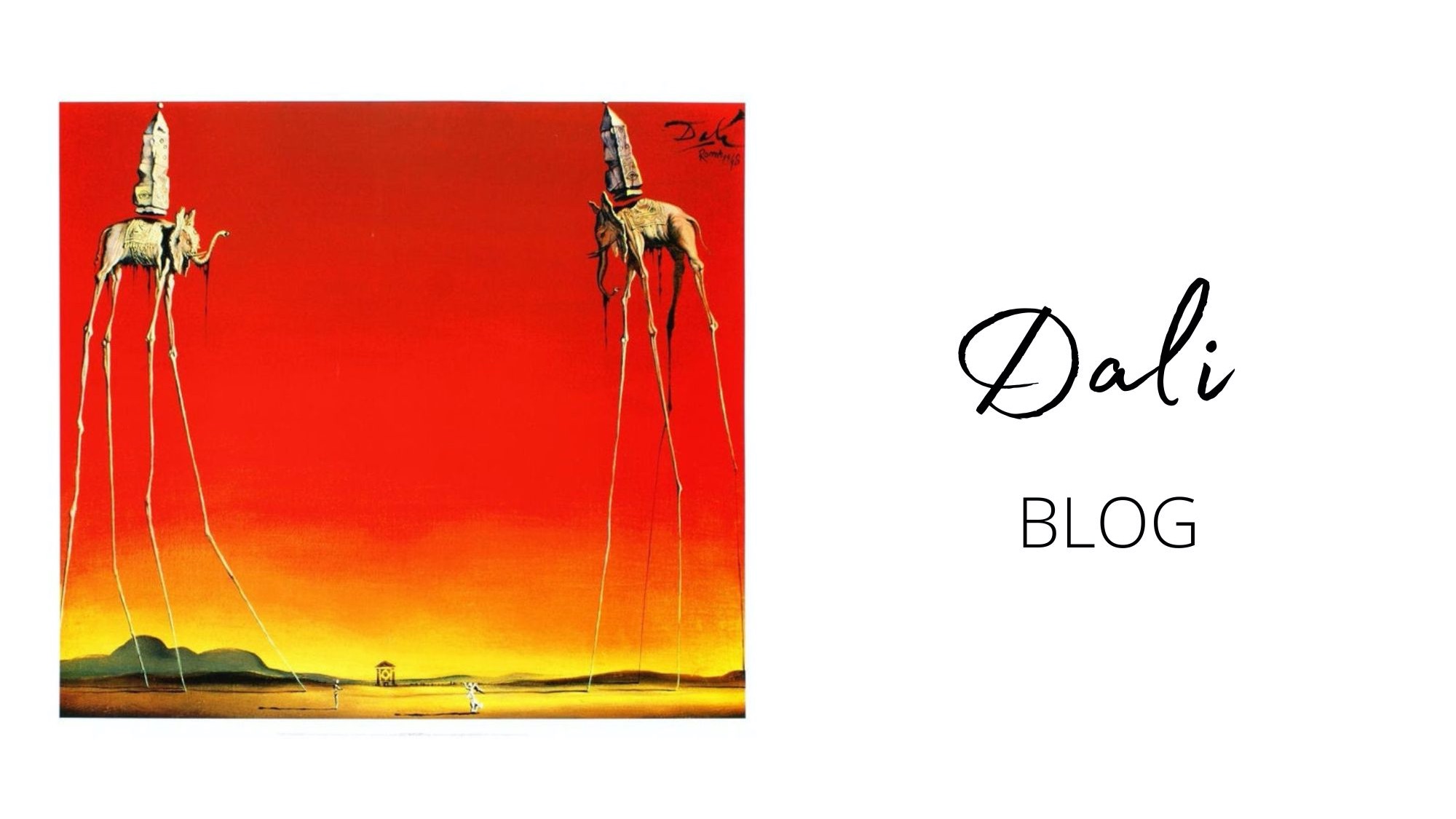Dali: A life of contradictions
Feb 06, 2023
Dali Blog
Salvador Dali was a Spanish artist famous for his surreal art.
He used traditional illusionistic style to create sometimes disturbing and unusual images.
He was born in Catalonia in 1904.
His parents both believed he was a reincarnation of a his brother who had died a year before he was born. Dali says he felt pressured to fill the void his brother had left.
He was drawn to art and influential artists from an early age. The family holidayed in Cadaques (Costa Brava) a place also frequented by artists such as Picasso and Ramon Pichot (pointillist).
Through school, Dali showed an aptitude for art in his studies.
He was inspired by the impressionists capturing fleeting light and colour conditions in his many landscape paintings.
In 1921 his mother died from cancer and his father quickly remarried his sister in law.
This led to a feud between Dali and his father and fuelled resentment that was to continue for many years and depicted cryptically in paintings like the Enigma of William Tell.
His father agreed for Dali to study art at the School of Fine arts in Madrid and a grudging acceptance that he was going to pursue this career.
Things did not go smoothly here, Dali was soon expelled for causing a riot and declaring his teachers incompetent.
He began to study cubism whilst remaining fascinated with the Spanish heritage of art.
So he was producing art that encompassed both the traditional and the new.
During the 1920's he became closely associated with the Surrealist artists who practised automation.
(the art of creating something without conscious control). Dali hated this practice as everything he created needed complete control!
The leader of the Surrealists Andre Breton commented that "perhaps with Dali that for the first time, the windows of the mind are opened fully wide"
He was eventually ex communicated from the surrealists due to his commercial success in America and had been unofficially christened "avida dollars"
In 1929 he met Gala. She had a strong an unconventional personality who he regarded as a kindred spirit.
Dali described her
"my intimate truth, my double, my one"
She took on many roles over the years including lover, manager, business woman, cook, secretary, nurse, chauffeur and companion.
She also tolerated Dali's many dalliances, he was accompanied everywhere by an entourage of beautiful women.
His paintings show an interest in Freudian dream analysis, childhood phobias, Roman Catholicism and also the rise of Nazism.
He was also full of contradictions and contrasts.
Dalí contrasts the strength of the elephant by giving them long, spindly, almost arachnid-like legs. They carrying massive obelisks on their backs which are actually floating.
The obelisks on the backs of the elephants are believed to be inspired by Gian Lorenzo Bernini's sculpture base in Rome.
Sometimes his eccentric behaviour overshadowed his art. Or was it part of the art?
"The only difference between me and a madman is I'm not mad"
At the show in London, which was to launch Surrealism in Britain, Dali gave a lecture
wearing a diving suit.
He nearly asphyxiated and was dramatically removed from the suit
Dali was horrified by the self destruction of Spain with the Civil War. Despite this he refused to take political stance against fascism.
The surrealists called him into a meeting and asked to denounce fascism. He insisted he had a fever and conducted the whole meeting with a thermometer in his mouth, the proceeded to remove layers and layers of clothing which he had worn.
This marked the end of his relationship with the surrealists and his attention turned to America where he found both fame and fortune.
The first time he visited America in 1934, he was greeted like a celebrity. The MOMA already had one of his paintings, the persistance of memory.
Hi eccentric behaviour only heightened his popularity. At the start of WW2, he moved to America.
The war prompted him to return to the art of the Italian rennaisance whose compositions influence the work of this time.
Dali was obsessed with scientific discoveries.
The atom bomb in 1945 was an influential event on his art work. Coupled with his growing interest in Catholicism.
He starts to split images into smaller sections.
He also develops an interest in the logarithmic spiral which he likened to the form of many natural objects including the Rhino horn.
Dali was commercially successful. He sold Christ of St John on the Cross to Glasgow Art Gallery for £8000.
His work was used to advertise jewellery, tapestries and other luxury items. The limp watches were used to promote a brand of hosiery.
Dali's role at the "insane genius" became the essential part of his marketability. He appeared on TV for adverts and interviews.
Despite the vastness of the Dali industry, he still managed to find time in the 1960's to paint some monumental canvases.
He also restored the old theatre at Figueras in 1974 that had been destroyed in the civil war.
During the late 1970's his health began to decline rapidly.
He was embroiled in a series of disputes about authenticity of signatures on prints.
Gala died in 1982 and Dali retreated into the castle he owned at Pubol. He was engulfed in a fire in 1984 and his leg was badly burned.
Despite this he lived for another 5 years and died in 1989. He was buried at the Dali Museum.
Join me for a two hour workshop and explore the weird and wonderful world of Dali and his art:
Want to join my FREE Pen and Watercolour course?

